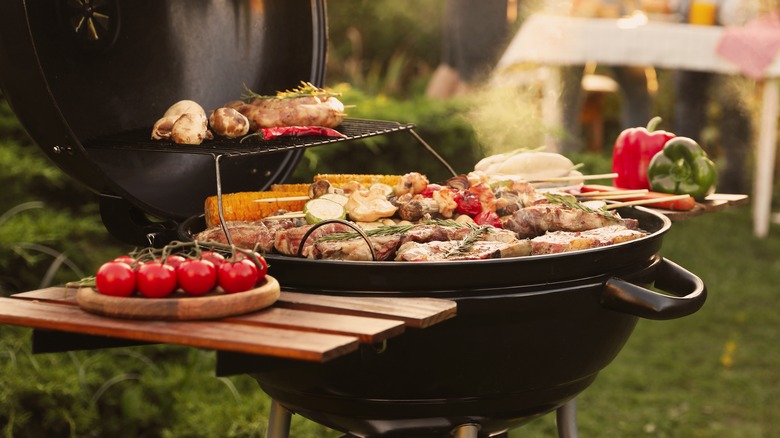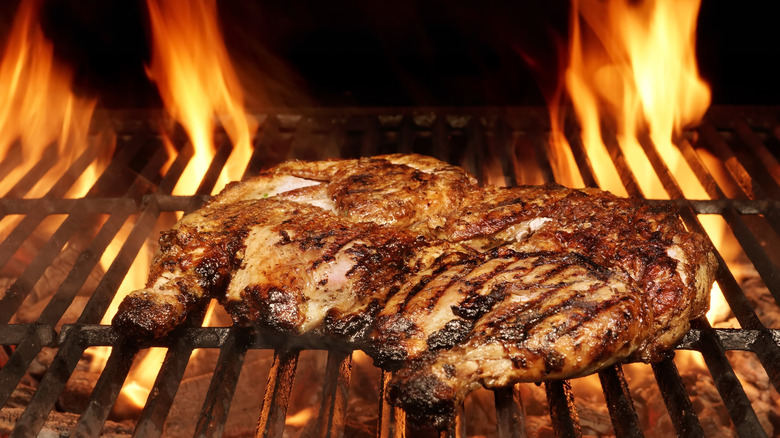The Most Important Thing To Watch For To Avoid Grilling Disasters
At its core, grilling is a complex science where the smallest miscalculation can end in less-than-ideal results. There are a lot of variables you need to account for, including temperature control, which balances caramelization with charring, the choice between wood and charcoal, and the type of meat or vegetable you're cooking. With all of these factors in mind, we asked grill expert chef Brad Wise, the owner of Trust Restaurant Group and executive chef at Rare Society Steakhouse, what he believes is the most important thing to watch for to avoid a grilling disaster.
Per Wise, the flame itself is the foremost variable to monitor during the grilling process. Once you understand where the flame flares up on the grill, you'll have control over the other factors of grilling, and eventually you can modulate your cooking process however you want. By seeing where your coal or wood is piled up in your grill, you can place your meats or vegetables strategically for the most effective char. Wise explains that by doing so, you can "avoid flare-ups by watching your grill and moving anything away from the direct flame if you see it start to drip too much fat."
Use hot spots to your advantage
Hot spots are areas of the grill with higher heat intensity and concentration. Wise advised that you should avoid such spots if you see that a lot of fat is dripping from your meat. This is why fattier meats or thicker cuts like ribeye are dangerous on top of hot spots. The fat will begin to render, potentially leading to flare-ups if it drips directly onto the coals. Not only can a flare-up scorch your whole steak, but it can also start a grease fire, which is a major safety hazard.
This doesn't mean that you should never use these hot spots. Wise notes that, "depending on what you're cooking you need to know where it is and when to use it." He states that thinner cuts of meat such as flank or skirt steak can be caramelized and charred perfectly on hot spots. Placing the meat directly over that hottest area allows for a quick sear, enhancing flavors and creating a desirable crust. This strategic maneuver ensures a more controlled cooking process, no matter what kind of meat or vegetable you're grilling, and it'll save you from common grilling mishaps. By understanding the relationship between flame and fat content, grilling enthusiasts can grill anything to their desired level of doneness, while avoiding any dangerous flare-ups. Once you've mastered the flame, you can add a few of these grilling tips to your repertoire for the ultimate barbecue.

